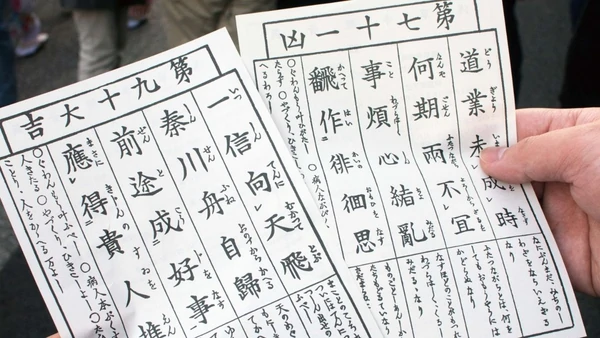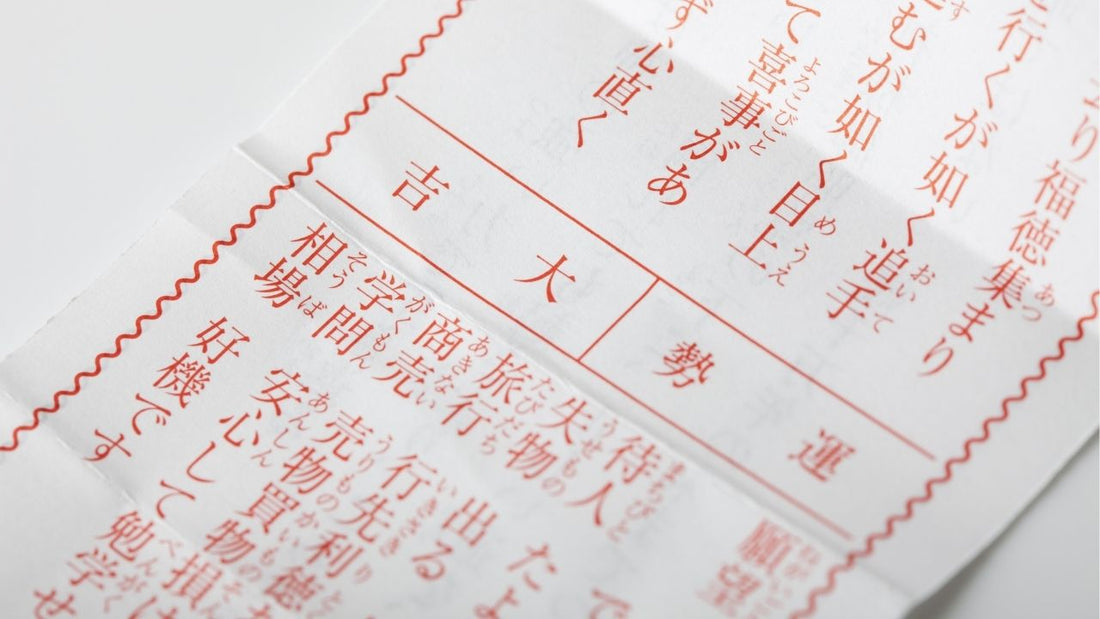After praying at the shrine, many people are attracted by small papers called "omikuji", offered near the office selling good luck charms, held by miko (young Japanese female staff). The word omikuji is written in kanji as follows: 御神籤. The result that can be read on it is interpreted as the manifestation of the spirit of the deities.
In this article, you will discover the origins of omikuji and its hidden meaning.

What is the origin of omikuji?
Originally, omikuji came from China and spread to Japan during the Heian period under the name of "Kannon-mikuji". Consequently, the origins of omikuji are historically connected with Buddhism. Then little by little, omikuji was popularized in Shinto.

Kannon-mikuji were the most popular type of omikuji in the Edo period. But after the separation of Buddhism and Shinto during the Meiji restoration in the 19th century, kannon-mikuji could not be used anymore. As a result, omikuji were now written in waka (Japanese poetry - kannon-mikuji were written in the form of Chinese poetry).
Nowadays, it is more and more common to find omikuji with good luck charms in Japanese toy capsule machines. In order to control infection cases, it is now even possible to use your smartphone to scan a code sharing with you an omikuji number, which can then be forwarded to the shrine's award office to receive your prediction.
Omikuji evolves over time.
How should you read the prediction of your omikuji?
When you are reading an omikuji, the first thing to pay attention to is the section indicating the "degree" of luck. There are a total of 8 "degrees" of luck:
- Great luck (daikichi - 大吉)
- Good luck (kichi - 吉 )
- Medium luck (chukichi - 小吉)
- Small luck (shokichi - 半吉 )
- Half luck (hankyoshi - 末吉)
- Small luck (suetsukichi - 末小吉)
- Bad luck (koshi - 凶)
- Great misfortune (daikoshi - 大凶)
(There are many theories regarding the interpretation of these degrees)

Many people are overjoyed when they draw the highest level of luck. However, in ancient times, people avoided this good prediction as much as possible because it meant that their luck would now go down.
On the other hand, if you got bad luck or a big misfortune, it meant that your situation would improve, and you should be happy about it. It is also tempting to keep on drawing omikuji until you get one with good luck, but this is not recommended. It is said that drawing several omikuji taints the divination you received. Therefore, you should be satisfied with what you drew the first time.
What should you do with your omikuji after reading your prediction?
After reading it, you can take your omikuji with you. However, if you had bad luck, it is common to tie the omikuji inside the shrine.
It is said that tying your omikuji to the branch of a tree would link it to the life force of the tree, and thus have your wishes granted. However, in order not to damage the trees, many shrines have set up places dedicated for this practice.

Due to a natural disaster on July 3, 2021, the Izusan Shrine is currently (July 28) still closed to visitors. We hope that Atami city will recover quickly.

After reading your omikuji, you should not just stop at the good fortune given, whether it is good or bad. You should consider what is written as a message from the deities, and use it as a guide for the future.

Are you looking a Japanese lucky charm or a gift? The Seven Lucky Gods shaped Wasanbon treats is for you!

